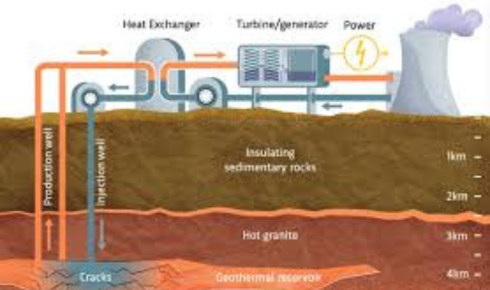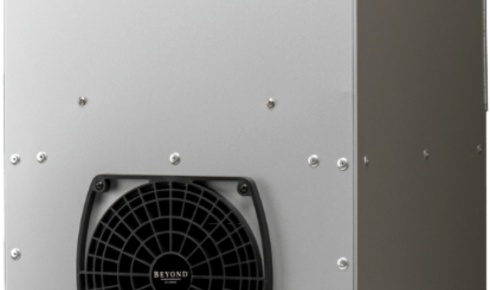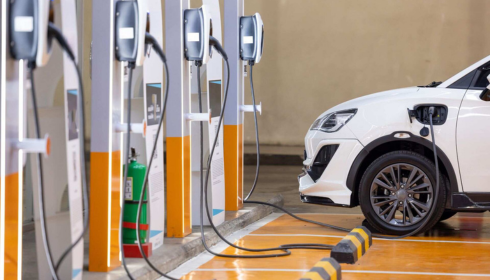There’s something poetic about using the ground beneath our feet to power our homes. No roaring engines, no plumes of exhaust—just the Earth itself quietly lending its steady warmth. For decades, geothermal technology has been the underdog of renewable energy, quietly efficient, rarely flashy. But as people grow more conscious of energy costs and environmental impact, this ancient yet modern form of energy transfer is finally getting its well-deserved moment.
Still, most folks aren’t exactly sure what geothermal energy really is. Ask around, and you’ll probably hear vague ideas about volcanoes or underground lava. It’s understandable—“geothermal” does sound like something out of a geology textbook. Yet, in reality, it’s one of the most practical and elegant energy systems out there, especially for heating and cooling homes and businesses.
Let’s take a walk through the ground-level basics—literally—and uncover how geothermal works in the real world.
The Ground Beneath Us Is Always Working
A fascinating thing happens below the surface of the Earth: temperatures stay remarkably consistent all year round. Dig a few feet down, and the ground sits at roughly 50 to 60 degrees Fahrenheit, regardless of whether it’s snowing outside or blazing hot. This stability is what geothermal systems use to their advantage.
While traditional HVAC systems fight against extreme outdoor temperatures—burning fuel in winter and overworking compressors in summer—geothermal systems simply exchange energy with the earth. When you need warmth, they pull heat from the ground. When you need cooling, they transfer heat back into it.
There’s a quiet brilliance to it. Instead of creating heat, the system moves it. It’s not about generating energy—it’s about balance.
So, How Does It Actually Happen?
If you’re imagining a massive underground power plant, relax. A geothermal setup for a home or business is surprisingly simple. Think of it as a looped connection between your building and the earth below.
That loop, made of durable piping, is buried in the ground or submerged in water. Inside, a mix of water and antifreeze circulates constantly, absorbing heat from the ground during the winter and releasing it during the summer. The system’s heat pump—usually located indoors—acts as the middleman, transferring that energy to where it’s needed.
Here’s the beauty of a geothermal system explained in everyday terms: it’s like your refrigerator, but in reverse. The same principle that lets your fridge pull heat out of food is used here to regulate your home’s temperature. Only, instead of cooling a few cubic feet of air, it manages thousands of square feet with almost no waste.
The Science That Feels Like Magic
Once you understand it, the process feels deceptively simple. But the science behind geothermal systems is rooted in some of the most efficient principles of thermodynamics. The system doesn’t rely on burning fuel or creating heat from scratch—it uses existing energy that’s already in the earth.
That’s why geothermal heating and cooling systems can reach efficiencies of 400–500%. For every unit of energy they consume, they move four or five units of heat. Compare that to a gas furnace, which rarely reaches above 95%, and it’s easy to see why geothermal is a game-changer.
And because the energy source—the ground—is renewable and consistent, the system’s performance doesn’t fluctuate wildly with the weather. It’s reliable in ways other systems just aren’t.
Beyond Heating and Cooling
What surprises many people is that geothermal systems can do much more than just maintain temperature. They can also provide hot water, radiant floor heating, and even help melt snow in driveways. It’s an all-in-one comfort system that keeps working quietly in the background, season after season.
There are different loop configurations too—vertical, horizontal, pond/lake, and open-loop systems—each suited for specific types of property. Urban homes often use vertical loops because they take up less surface area, while rural properties with more land might go horizontal to save installation costs.
Whichever setup you choose, the principle stays the same: tapping into the Earth’s consistent underground temperature to manage your indoor climate efficiently.
Maintenance? Surprisingly Minimal
Here’s another thing that makes geothermal systems so appealing—the low maintenance. Unlike furnaces or air conditioners that have multiple moving parts exposed to the elements, geothermal systems are mostly underground and sealed. The indoor components last decades, and the ground loop can easily last 50 years or more.
A typical maintenance check involves inspecting the heat pump, checking refrigerant levels, and ensuring the loop fluid is circulating properly. That’s about it. No messy fuel filters, no worrying about flue gases, and no constant tune-ups.
It’s not totally “set it and forget it,” but it’s pretty close. For homeowners tired of frequent HVAC repairs, it’s a breath of fresh air—literally and figuratively.
The True Cost of Comfort
Let’s be honest: geothermal systems aren’t cheap to install. The upfront cost can be significantly higher than a traditional HVAC setup. But the long-term savings are where geothermal shines.
Because it’s so efficient, the system slashes monthly energy bills by 40% to 70%. It also qualifies for federal and state incentives, which help offset installation costs. And once installed, it’s built to last decades longer than standard equipment.
When you add up the math—energy savings, lifespan, and minimal upkeep—it becomes clear that geothermal isn’t just an eco-friendly choice; it’s a financially smart one too.
Many property owners also love the quiet. No outdoor condenser unit humming away, no furnace rumbling to life at 2 a.m. Just steady, peaceful operation.
The Broader Environmental Impact
The Earth gives us the perfect opportunity here: a renewable, stable energy source sitting beneath our feet, just waiting to be used responsibly. Geothermal systems produce no combustion emissions, no carbon monoxide, and no harmful byproducts.
For communities trying to reduce their carbon footprint, geothermal represents a tangible step forward. Unlike solar panels or wind turbines, which depend on weather conditions, geothermal runs steadily, rain or shine. It’s the workhorse of renewable energy—steady, dependable, and long-lasting.
When you break down the workings of geothermal, it’s really about cooperation. Humanity and nature, working in sync. We’re not conquering the environment here—we’re collaborating with it. And that’s a rare thing in modern energy systems.
The Future Beneath Our Feet
As energy demands rise and sustainability becomes more than just a buzzword, geothermal’s quiet efficiency feels more relevant than ever. It’s not about the flash of solar panels or the grandeur of wind farms—it’s about subtle brilliance.
Imagine an entire neighborhood powered by geothermal loops underground, invisible to the eye yet powering every home efficiently. That’s not science fiction; it’s already happening in many places around the world.
The challenge now is awareness. More people need to understand what geothermal energy truly offers—not just as a technology, but as a philosophy. A way of working with the planet instead of against it.
Wrapping It Up
In a world where we often chase the next big innovation, sometimes the smartest solutions are already beneath us—literally. Geothermal systems don’t shout for attention, but they deliver quiet, consistent comfort that lasts for generations.
They remind us that sustainable living doesn’t have to mean compromise. It can mean smarter choices, cleaner energy, and comfort that doesn’t cost the planet.
The ground beneath us has been holding steady for billions of years. Maybe it’s time we start paying attention—and using its steady rhythm to power a more balanced, thoughtful future.




